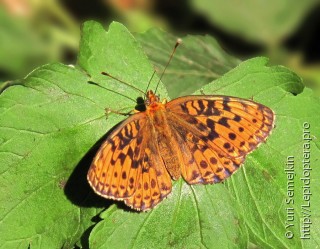Photo #38913: Lepidoptera sp.
Male

Click image to enlarge
Base gallery. Upperside. Alive insect.
Photo: Yuri Semejkin. Image without retouching at the website. Identified by: Robot
Date and time, location shooting/catching: 2014-07-10 00:00:00, Vladivostok, Botanical Garden - Institute of the Far Eastern Branch of the Russian Academy of SCIENCES
Comments on this image
Your comment
Please, create an account or log in to add comments.
Other photos Lepidoptera sp.


















































All large size images of Lepidoptera sp. on one page
Please, create an account or log in to upload your photo


